Behringer Truth B2031A - how truthful is it?
23 Feb 2022
I bought one speaker out of curiosity. I wanted to see the value the speaker delivers for just $199 (in 2022!).

B2031A
What a great first impression unboxing and taking it apart!
These things are designed (thanks, Genelec!) and built (thanks, Behringer!) really well: the cabinet is dense and solid, the driver frame is cast, the circuits have good layout and soldering. Speaking of circuits: 3 TDA7293 chip amps power it, fed by a toroid transformer. At the ±42V supply voltage, the power these chips can deliver is over 300W. This is not the 20-year old B2031A design you see reviewed online: on the outside it looks the same, but the PCB is a new revision of the now discontinued B3031A (which I have had for 10 years and like a lot).
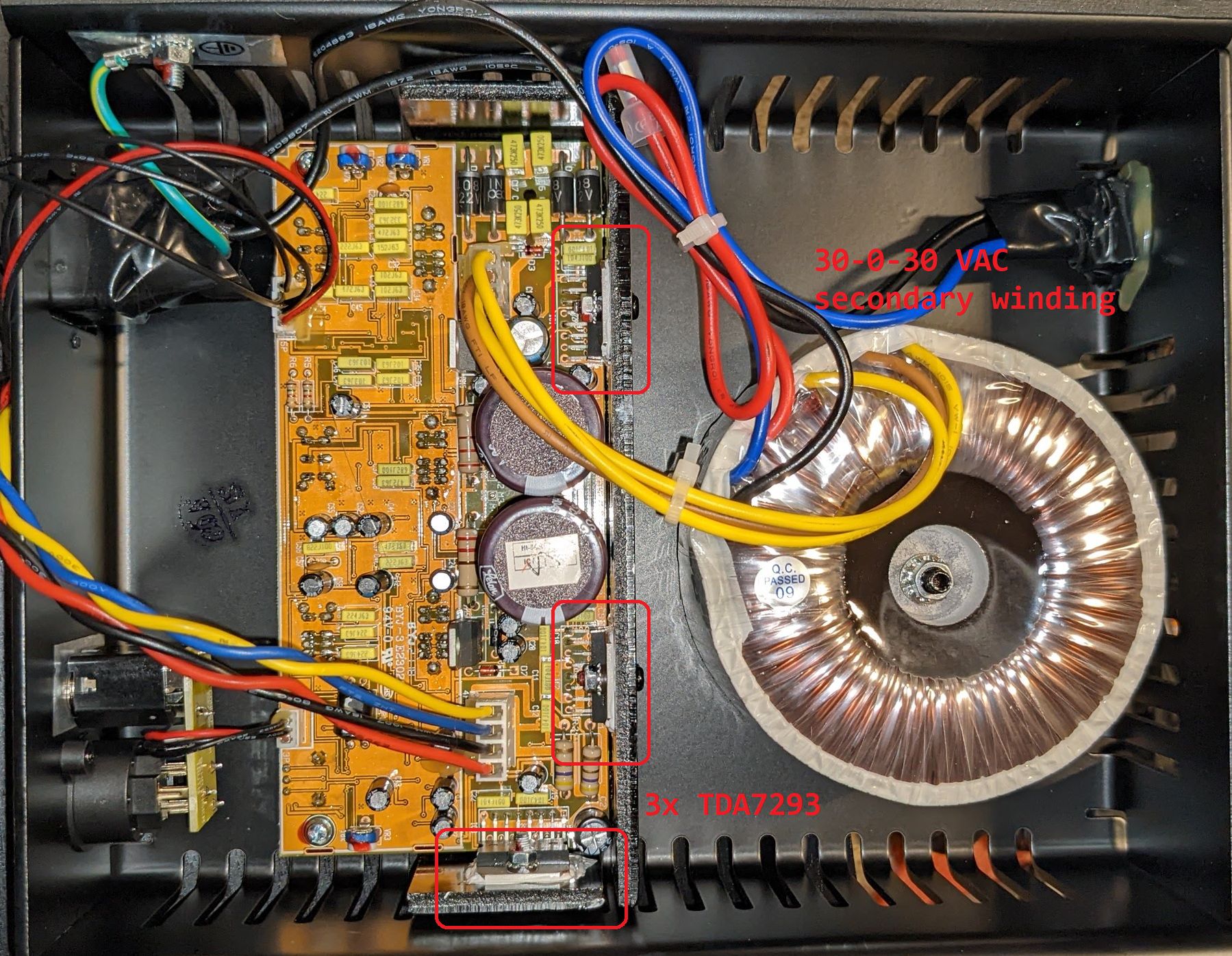
The B2031A electronics.
I particularly like the front facing bass ports and the down facing rear connectors that make placement easy.
But then you turn it on... Right out of the box, my B2031A sounded bright. Sure enough, a sweep confirmed the tweeter is 4-5 dB too loud above 4 kHz. They say it is factory calibrated... Did the technician stick the microphone in the woofer?
MOD 1
I first relabeled the rear panel switches to have the 0-level be the most flat frequency response.
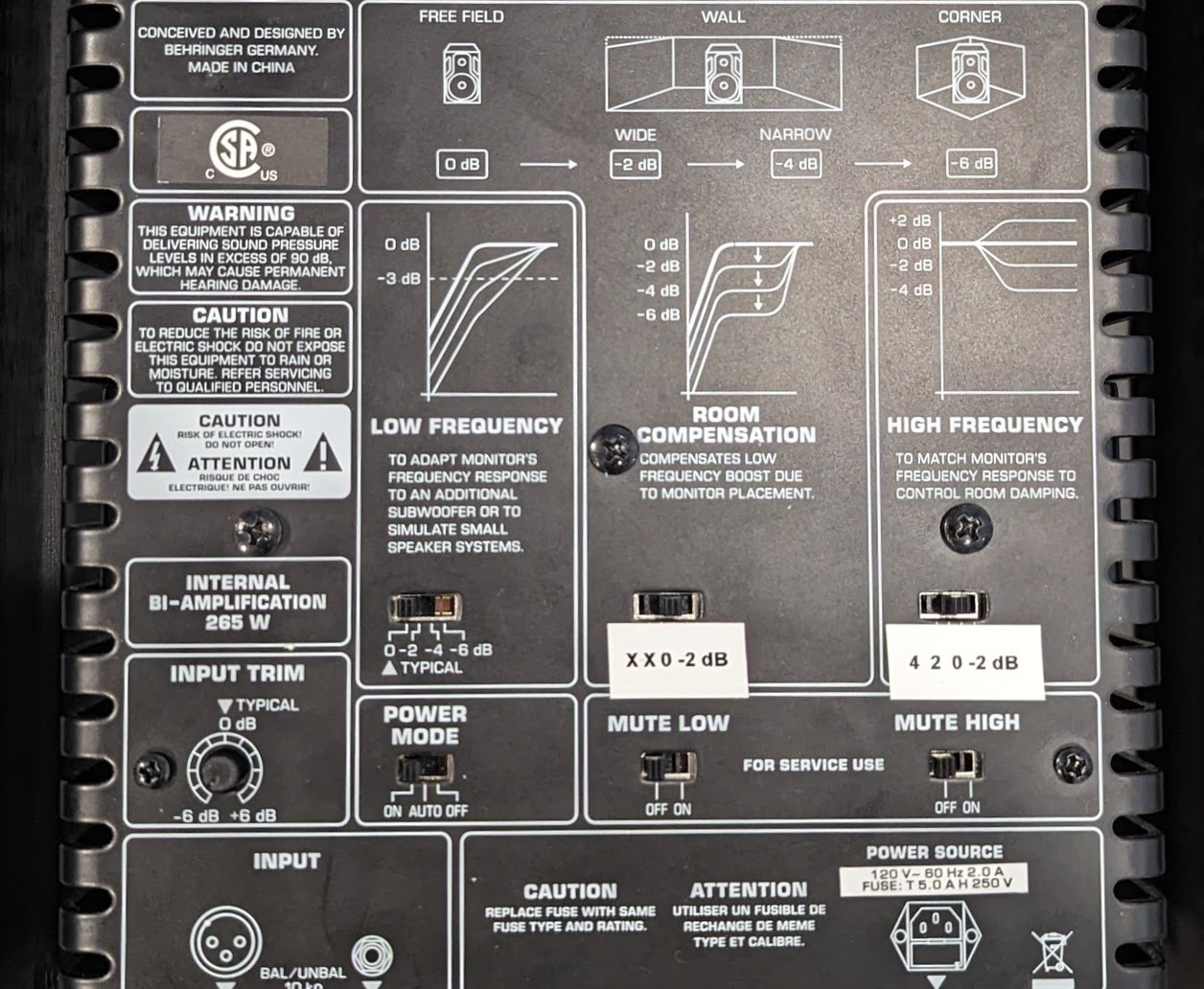
More truthful switches.
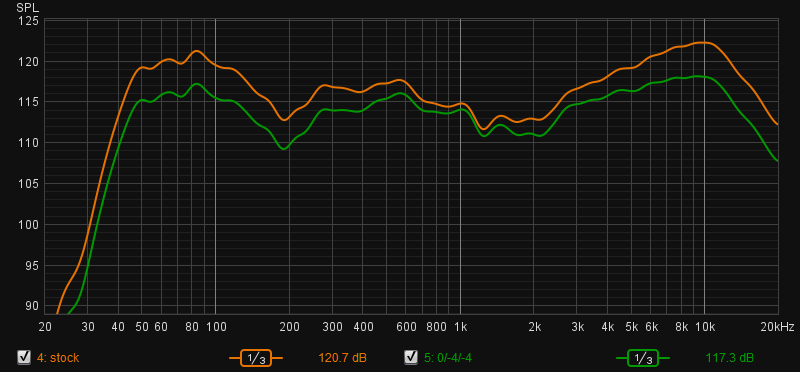
Out of the box response vs relabelled switches (at new zero).
MOD 2
It was time for more drastic measures. I wanted to address the dip around 1-2 kHz and my plan was to widen the overlap of the two drives at the cross-over frequency. I removed the main PCB, took out the soldering iron and increased the woofer's low-pass filter cut off frequency, so that the cross over is at 1.95 kHz vs 1.85 kHz originally. I didn't want to take out existing components (they are also glued), so I decided to solder a 47 kOhm resistor in parallel to R86. This increased the overlap of the two drivers and bumped the frequency valley by ~2 dB. Still not ideal, but better.
MOD 3
The frequency response of the tweeter bugged me, as it is a mountain instead of being flat. Studying the ciruct revealed that Behginer has a 17 kHz booster in the tweeter signal path. My plan was to move it to 25 kHz and increase that filter's Q-factor, so it doesn't affect <10 kHz much. This should move the peak to the right, flattening the climb and hopefully countering some of that steep fall off. After simulating the circuit, the mod was to solder a parallel 10k resistor to R80.
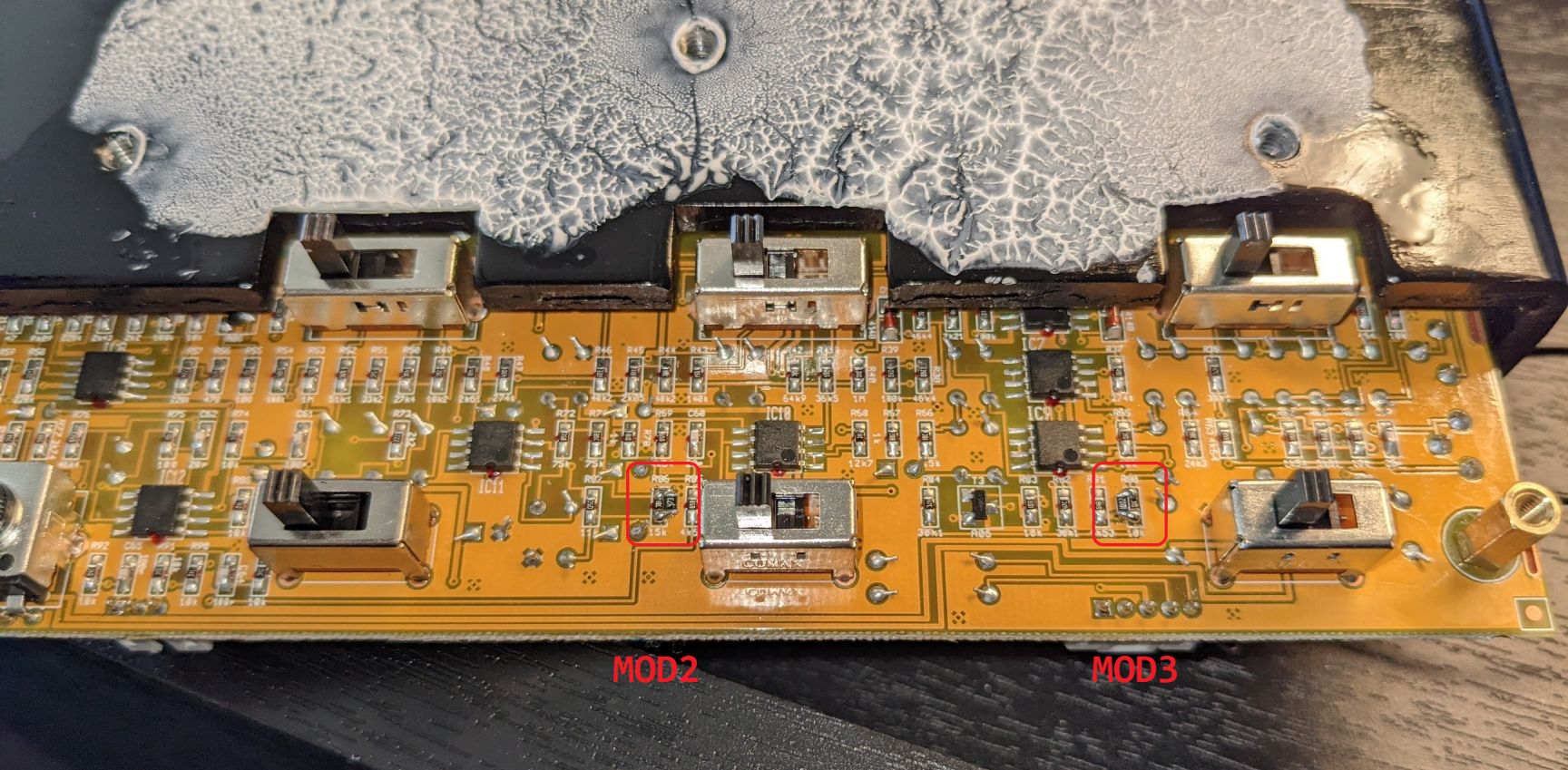
The 2 resistor changes.
MOD 4
For final adjustments, using the factory trimmers, I decreased the tweeter level a bit, and adjusted the modified high frequency booster.
Conclusion and Update from 1/3/2024
The final response is 37-20kHz +/- 3dB.
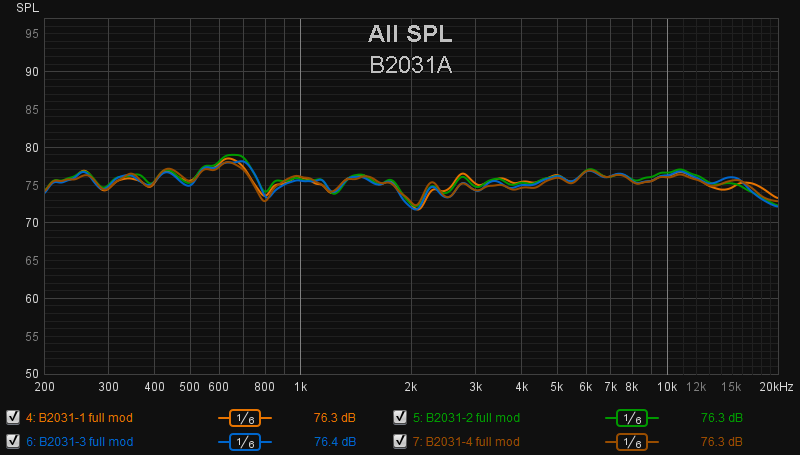
Frequency response of 4 speakers after applying the mods above.
As you can see, all the mods I did cost absolutely nothing (other than a weekend of my effort). I am dumbfounded why Behringer doesn't tune their speakers better. With all the mods, the speaker is quite nice actually.
Update: I now have 8x B2031A, all bought separately one-by-one. All mods apply equally to all of them and the diagram above depicts 4 of them.
MOD 5
For fun I bought a 20 year old (!) B2031A from Facebook Marketplace that had stopped working. The issue was that the 15V linear voltage regulator had burnt. So, as a final mod, I recommend attaching a small heatsink to the two regulators with thermal glue. Use clips to hold them in place until the glue cures.
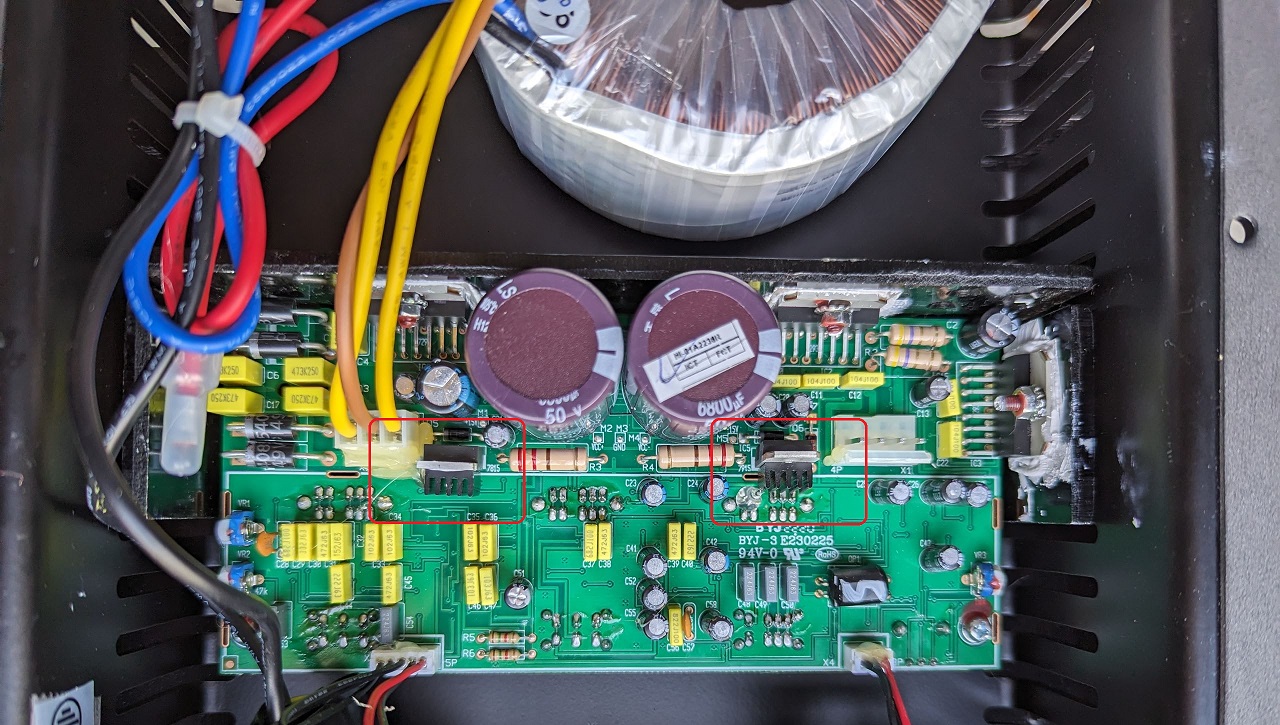
Adding 2 small heatsinks to the LDOs.
Comments for Behringer Truth B2031A - how truthful is it?
Emil on March 24, 2023
Dear Rouslan, love this mod, the solid analytical approach behind it and the beautiful documentation! Always a pleasure to visit your blog and learn couple of thing from you!
Rom on April 12, 2023
Hi, Realy good job ! "Thankfully, Behringer has put 2 hidden trimmers to change the level of the tweeter and adjust a ~17 kHz booster." Can you show us these trimmers please ? Thank you in advance